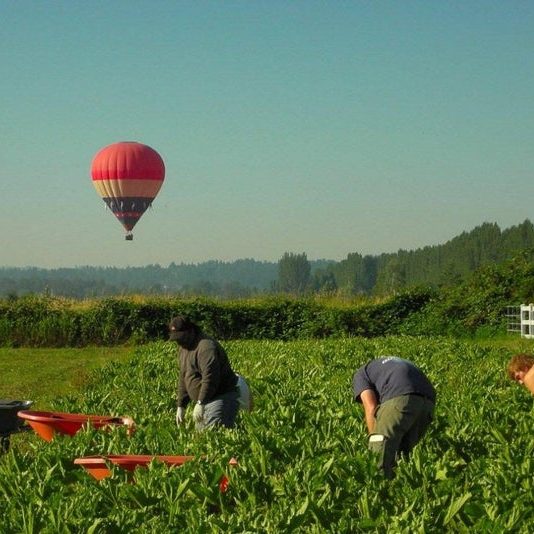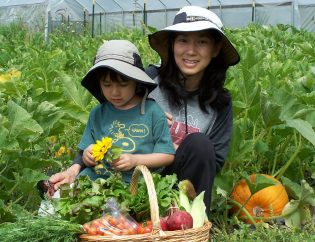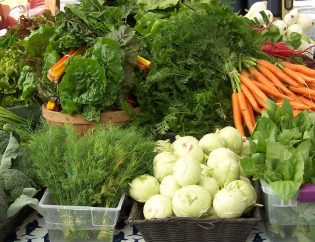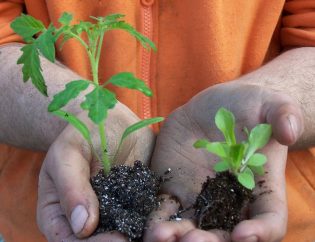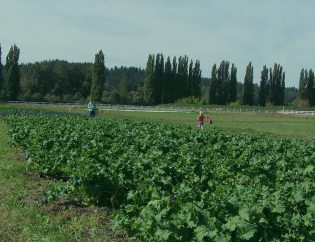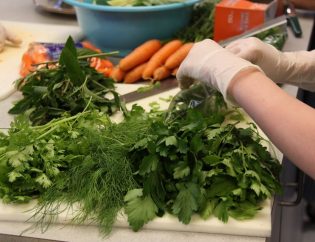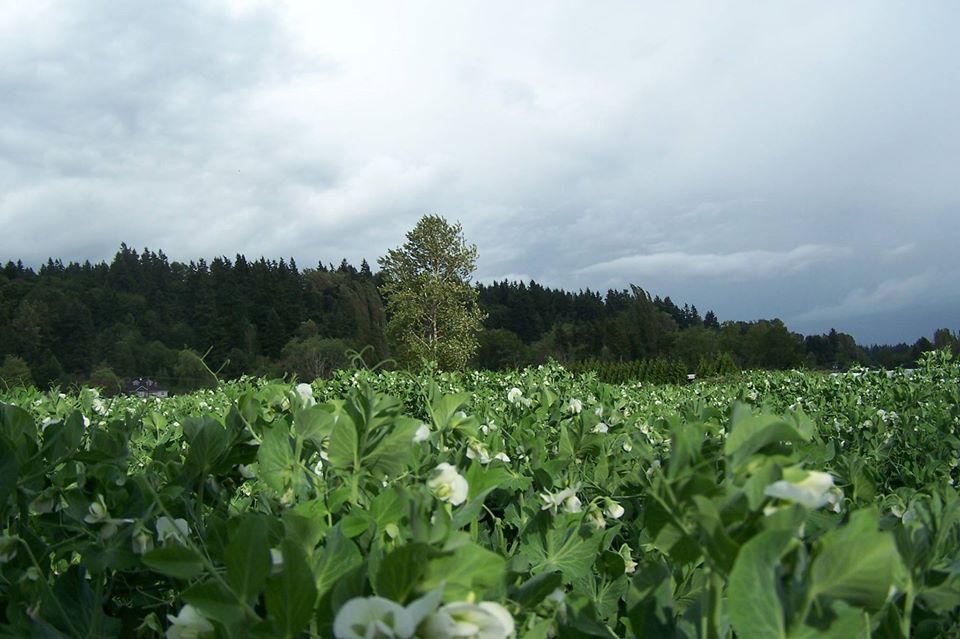
“The Root Connection farm is healthy too. After 34 years, the land has been transformed into a vibrant, healthy chemical-free eco-system which produces superior food. We have faith that our food supply is secure. Debts have been paid. There are no operating loans casting a shadow that at some point,, a bank may take over the farm. We have a loyal and dedicated labor team, as well as the next generation committed to running the farm in the future.” [Excerpt from first segment; now onto the next segment . . .]
After purchasing the Ranch property, and continuing to make improvements to the farm business, my thoughts were focusing on the next generation, and how that was all going to work out when I was not around.
I think that experiencing the death of my husband, brother-in-law and my mother in just one short year took a lot of the “stuff” out of me. I wasn’t young anymore! While I was grateful that I was able to purchase the Ranch property, it came with burdens – a high interest mortgage with huge payments, three large buildings and a house, all of which were in need of extensive repair. A well breakdown and subsequent repair commonly would top out at around 7K and seemed to be required at least once every three years.
Basically it was a money pit.
Some parts of the barns needed cracked beams replaced, the electrical systems for the whole property needed updating – and on and on. Basically it was a money pit. Income from renting the barns and house didn’t even cover the mortgage payments, let alone taxes and repairs. So, I thought, even though I was managing (still living in the RV, I didn’t have any housing expenses myself), I was wondering how my son could possibly keep up with those expenses (on a farmer’s income) should something happen to me. And it was pretty obvious that my chances of outliving a 30 yr. mortgage were not good.
So, the thought that “our food supply is secure” seemed more temporary. This really illustrated the fate of so many farms. The owner works long hours for a low income, and when he or she finally can’t do it anymore, what happens? There is no retirement plan and probably not much Social Security. The value is in the land. So it gets sold, and possibly not farmed again. The business itself should be worth something, but a new farmer likely would have to do what I did during the first years – work for nothing during the day and have a paid job at night. No joke- I get asked many times by aspiring farmers what they should expect, and I always tell them “you need to be able to live off your spouse’s income and/or get a night job. Plan on at least 10 years of that. Typically, such a person would have no money to purchase your property, let alone pay anything for the business”. So there was that . . .
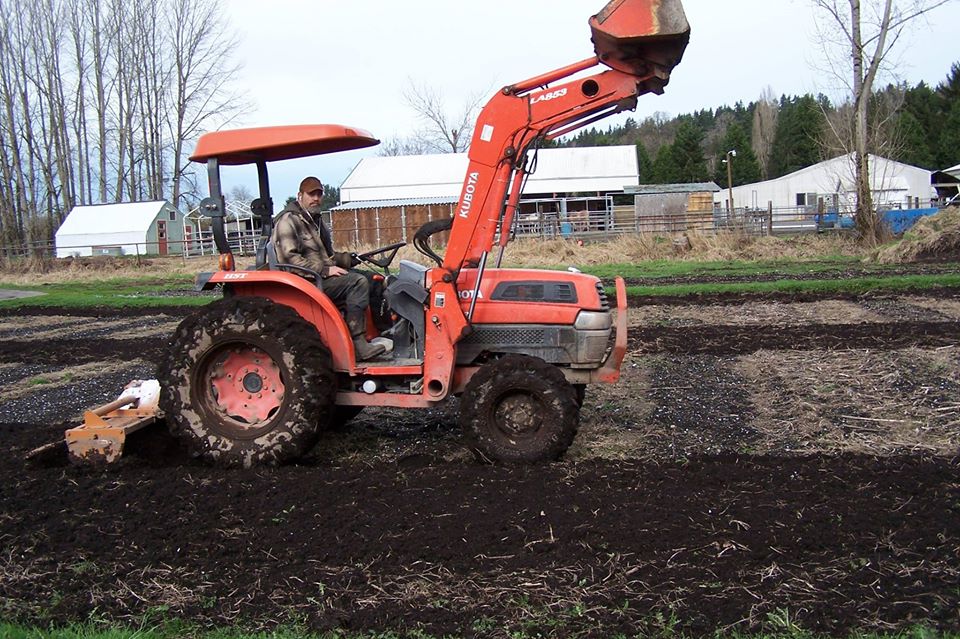
I also was developing a philosophical mind set about ownership of farmland – realizing that someone has to “buy” it, as it has value, but at the same time, isn’t there an obligation to protect something that is able to produce food? Over the years, I was astonished at the attitude that many of the surrounding citizens and city governments have about that topic. Of course, many want to preserve farmland, and fortunately for all of us, King County voters passed the Farmland Preservation Program in the late 70’s. If it weren’t for that, there is no doubt there would be very little farmland left in the county today. As the population around what was left of our little valley grew, the land grab was on. Woodinville ate up the farmland on their side, and Redmond did the same thing on the other. Not satisfied with that, they kept trying to annex what was left of the King County land in the middle. Not to have their own farmland, to be sure. And they are still trying to do it. “But, but . . . we need, we need . . . more businesses, more housing . . . and we’ll even be good and require tiny green spaces and some “low to moderate income” apartments be included in the master plans”. Well, WHOOP-TEE-DOO, I thought (and said, many times!) except when the farmland is gone, you’ll have to build somewhere else anyway, right? Somehow that concept didn’t sink in. Why can’t we be the people who actually value their farmland and keep it? . . . but nooooo . . . That doesn’t seem to go over well with the movers and shakers either. So there was that . . .
Just this year, there has been another push by Woodinville to force King County to move the Urban Growth Boundary. (This is a boundary established to prevent any zoning changes to agriculturally zoned lands beyond a certain point). Since annexation was soundly rejected by voters in the past, this was the latest tactic. Here is an excerpt from one of many letters I wrote to King County on the subject:
“How do we view the preservation of farmland in this valley? One way to look at it is as a refrigerator- we rely on a refrigerator to keep our food preserved until we need it. As a human, I realize that in order for it to function properly, I need to make sure that I stock it with all the necessary food groups, and anything that is not immediately in use needs to be frozen for the future. My dog, however, has a different view – I call it the “drool reaction”. When I remove a piece of meat, the drool starts while his eyes track it to the bowl. I could do this 30 times in one day and get the same reaction. He has no comprehension that if I did this 30 times, there would be no more food for him that month. I don’t expect him to understand this – he’s a dog, after all, and cannot reason on the concept of conservation and planning for the future.”
April 30, 2012
"In a letter read into the public comments at the recent hearing, Claire Thomas, owner of the Root Connection, said she has already seen agricultural land prices rise in the Sammamish Valley in anticipation that the county will begin to chip away at the UGB and allow rezoning of farm land. It's a danger that Haakenson cites, too."
What Makes Sammamish Valley 'Farm Country'?
During my experiences over the past 30 years I have witnessed many forms of drooling. I have heard comments such as “farmers have no right to keep this farmland from being developed”, “they are just a bunch of short people growing bok choy”, “I’m sure glad I got a college education so I don’t have to be a farm worker”, “you can’t grow anything on this land”, and many other ridiculous comments.
During my experiences over the past 30 years I have witnessed many forms of drooling.
I have seen the Woodinville end of the valley systematically paved over, with the resulting run-off doing a good job of polluting the Sammamish River. Didn’t anyone think it might have been a good idea to put some of it in the freezer? No, it was left up to King County to close the refrigerator door, but that doesn’t stop the drooling. So there was that . . .
The other part of a secure food supply were the members. The main business now involved a group of people who are part of the farm year after year, with new families replacing those who left. The insecurities involving holding onto the land also played into the security of our business model. So there was that . . .
How to meld them and make the two stronger was something I pondered about. Somehow there must be a way to keep the business model, but be able to get the value out of it and therefore help secure the land without a huge mortgage. So I did it again- wrote about that topic in the CSA newsletter, and conferred with my CPA and an attorney to figure out what the business should actually be worth. Why, I reasoned, couldn’t I sell the business to the members?
Formation of Roots of Our Times Cooperative (ROOT)
The upshot of that was that some members met with me, and with the help of an attorney, Roots of Our Times Cooperative (ROOT) was formed in 2006. The purpose was to purchase the Root Connection business and raise funds to do so by private stock sales to any of our members who wanted to participate. We developed strict By-Laws which said that the business had to remain 75% CSA, and that investors would only have 1 vote regardless of how much money they invested. This was to insure that a small group of investors could not have enough votes to overturn the purposes as described in the By-Laws and change the nature of the business. ROOT purchased the business on a Purchase Agreement (Note), made a down payment, and also purchased a much needed new tractor. Since then, ROOT has had enough stock sales to pay off the note.
What was the money paid for the purchase of the business used for? Well, I combined that with all I had left of personal savings, and worked on paying off the mortgage on the Ranch. So the circle of security is closing – ROOT has a Board of Directors who will see to the legalities of running the CSA, and Jeff, who is already the farm Foreman, can afford to keep the property and work the farm.
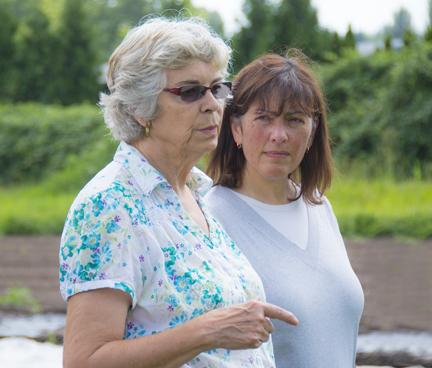
Source: nwnews.com
(Photo courtesy of Lincoln Potter)
We Have Your Health And Well Being In Mind
We grow all Non-GMO produce and strictly adhere to organic growing best practices. Since 1987, we have been growing local, chemical-free food for the community at our 20-acre site in the Sammamish Valley between Woodinville and Redmond.
The model we created has been noticed by other farmers, and some are taking steps to do similar things. We all feel strongly about protecting agricultural lands and providing food to people. Farmers work hard for little to be able to do this, and models like this can give them hope that what they started can continue into next generations. There is no better defense against profit-driven antagonists to local agriculture than a network of small farms and customers that are secure.
We [farmers] all feel strongly about protecting agricultural lands and providing food to people.
So, is this the end of the story? No, for it seems that when some problems are solved, others come up. Farmers want to provide food to people – All people - and I had noticed frustrations around that. They wanted to do more than sell to just those who had access and could afford it. They knew they had solutions to disease and conditions like obesity – right out in their fields. But where to get help in going that extra step? So there was that . . .
Read more in Farms For Life – Closing the Circle
